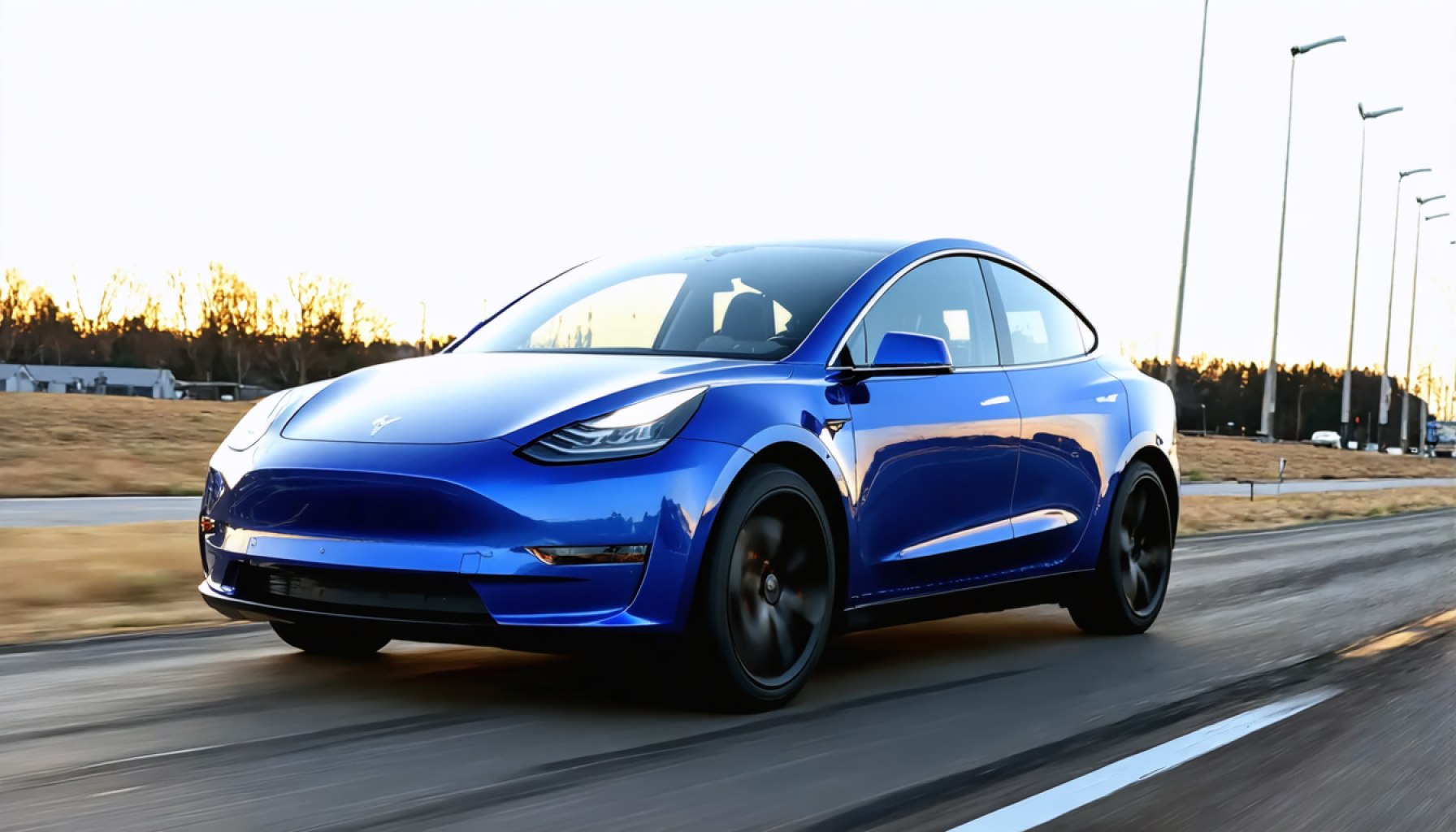- Tesla’s new Model Y variant, “Juniper,” offers Long Range All-Wheel-Drive at a competitive $48,990, excluding federal tax incentives.
- The Juniper trim mirrors earlier versions with similar specifications, boasting a 327-mile range and a 125 MPH top speed, with a 4.6-second 0-60 MPH acceleration.
- Unlike the Launch Series, the Full Self-Driving feature is optional for the Juniper model, available for $8,000 or via a $99 monthly subscription.
- Gigafactory Texas boosts production amid a slight dip in Q1 delivery figures, setting the stage for recovery in the year’s second quarter.
- The new Model Y underscores Tesla’s strategic market positioning, balancing innovation and accessibility as the company targets sustainable driving solutions.
Tesla enthusiasts in the United States are abuzz with anticipation as the electric vehicle behemoth unveils a new variant of its iconic Model Y. Dubbed “Juniper,” the freshly minted trim emerges as a beacon of affordability and performance, lighting up the road with its Long Range All-Wheel-Drive capabilities, all for a starting price of $48,990—before the federal tax incentives sweeten the deal.
In a move that seems almost poetic, Tesla mirrors the launch of earlier versions while delivering the Juniper trim with nearly identical specifications to its pricier counterpart, the Launch Series. With a range stretching 327 miles and a top speed that whispers thrillingly to adrenaline seekers at 125 MPH, this iteration houses a slightly tempered yet impressive 4.6-second 0-60 MPH acceleration.
The shift from the exclusivity of the Launch Series marks a democratizing step for Tesla, a company renowned for pushing boundaries. Yet, unlike its predecessor, the newest model doesn’t include the coveted Full Self-Driving (FSD) feature as standard. Instead, it opens up a choice for consumers—a standalone purchase for $8,000 or a more gradual commitment with a $99 monthly subscription, a reflection of Tesla’s savvy integration of user needs with business strategy.
Beyond its sleek lines and tech genius, the Juniper signifies Tesla’s strategic maneuvering in the market labyrinth. With Gigafactory Texas humming to the tune of ramped-up production, the release adds momentum at a critical juncture. Despite a recent dip in Q1 delivery figures—where production outpaced deliveries by a significant margin due to transitioning production lines—the introduction of the Juniper paves the way for better days in the fiscal calendar’s second quarter.
Ultimately, the new Model Y is more than a car; it is a statement, a testament to Tesla’s commitment to refined innovation at approachable price points. As Tesla braces for its next earnings call, all eyes remain on whether this latest addition can help steer the company towards uncharted horizons—where sustainable driving and consumer access ride side by side in the fast lane.
Why Tesla Model Y Juniper Could Be a Game-Changer
Tesla Model Y Juniper: Exploring Beyond the Headlines
The much-anticipated launch of the Tesla Model Y Juniper marks another strategic step by Tesla to broaden its market appeal. While the source article highlights its affordability and performance, there are several additional angles to explore around its features, market impact, and future trends.
Features & Specifications
The Model Y Juniper closely mirrors the high-end specifications of its predecessor, the Launch Series, with subtle yet important distinctions:
– Range: 327 miles per charge, positioning it as highly competitive among electric SUVs.
– Performance: It accelerates from 0 to 60 MPH in 4.6 seconds, balancing speed and efficiency.
– Price: At $48,990, it offers a more accessible entry point for potential Tesla owners, especially after federal tax incentives.
Real-World Use Cases
The Model Y Juniper is ideal for:
– Daily Commuters: Long range ensures minimal charging stops, making it practical for everyday use.
– Adventurers: All-Wheel-Drive provides stability and performance in diverse terrains and weather conditions.
– Tech Enthusiasts: With optional features like advanced driver assistance (FSD), it caters to tech-savvy users interested in autonomous driving.
Market Trends & Predictions
Tesla’s introduction of a more affordable model aligns with broader market shifts:
– Increased Demand for EVs: As global interest in sustainable vehicles rises, affordable options like the Juniper could capture a significant market share.
– Competition and Innovation: Tesla continues to innovate in anticipation of growing competition from other automakers venturing into the electric vehicle space.
Pros and Cons Overview
Pros:
– Affordable entry price point in comparison to other Tesla models.
– Long driving range suitable for diverse needs.
– Offered choice in selecting FSD capabilities based on user preference.
Cons:
– FSD not included as standard, adding cost for those interested in the feature.
– May have similar styling to previous models, potentially lacking novelty for some buyers.
Insights & Expert Opinions
Industry experts suggest that Tesla’s focus on affordability with the Model Y Juniper could bolster sales amid fluctuating delivery figures. The production surplus mentioned in Q1 hints at Tesla’s strategic planning to ramp up availability and attract new customers.
Actionable Recommendations
For those considering the Model Y Juniper:
– Evaluate Incentives: Research federal and state tax credits to maximize savings.
– Compare Models: Weigh the benefits of added features like the FSD against your driving needs.
– Plan Charging: Understand the charging infrastructure in your area to best manage long-range capabilities.
For more details, visit Tesla.
Conclusion
Tesla’s Model Y Juniper represents a thoughtful blend of technology, affordability, and sustainability. As it accelerates into an evolving market landscape, the Juniper stands poised to not only appeal to current Tesla enthusiasts but also attract a new segment of eco-conscious drivers looking for performance without breaking the bank.
Embrace the future of driving with informed choices, and keep an eye on Tesla’s upcoming innovations as they continue to redefine the boundaries of the electric vehicle industry.
